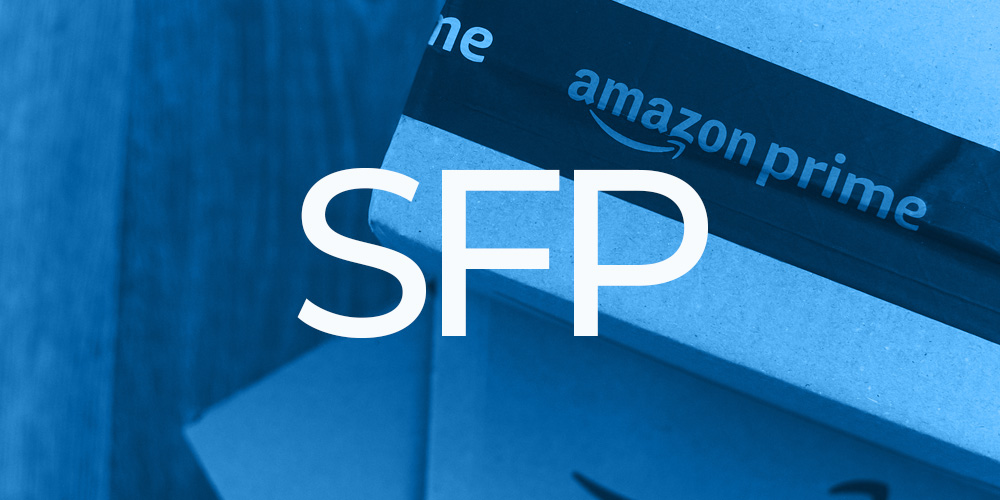In the ever-evolving world of e-commerce, staying on top of the latest programs and strategies can be a game-changer for online sellers. One such program that has garnered a lot of attention in recent years is Amazon's Seller Fulfilled Prime (SFP). In a conversation with our e-commerce experts, we explore the ins and outs of SFP, its significance in the e-commerce landscape, and the recent changes that have taken place.
Understanding the Amazon Ecosystem
Before delving into SFP, let's briefly touch on two other fulfillment methods within Amazon's ecosystem: Fulfilled by Amazon (FBA) and Fulfilled by Merchant (FBM). FBA allows sellers to send their products to Amazon's fulfillment centers, where Amazon takes care of storage, packaging, and shipping, ensuring that products display the coveted Prime badge and offer one- to two-day delivery. On the other hand, FBM entails sellers shipping directly from their warehouses or third-party logistics providers (3PLs), offering more control but without the Prime badge and potentially longer delivery times.
Seller Fulfilled Prime (SFP): An Exclusive Club
SFP occupies a unique niche within Amazon's offerings. It allows a select group of sellers, often called "medallion holders," to ship products from their warehouses while still maintaining the Prime badge and offering one- to two-day delivery. However, this privilege comes with stringent requirements that not all sellers can meet.
In the earlier days of SFP, many sellers joined the program, but as Amazon tightened the requirements to ensure fast and reliable delivery, a significant number of them fell out. The result was a more exclusive club of SFP medallion holders who could meet Amazon's high service level standards.
The Recent Changes
However, the landscape has recently shifted. Amazon has reopened enrollment for the SFP program, allowing more sellers to participate. But there's a catch – they're increasing the fee to sellers shipping SFP while maintaining their stringent delivery metrics. This move aims to keep sellers committed to maintaining the high-quality service that SFP promises, even as they handle their own logistics.
The increase amounts to roughly 2% more on top of existing fees and freight costs. While this may seem like a small percentage, it can add up significantly, especially for products with tight profit margins.
Strategic Use of SFP
Despite the added costs, SFP remains a valuable tool for e-commerce sellers, particularly during peak seasons and special events. Sellers can use it strategically to ensure they never run out of stock, which is crucial for maintaining product rankings and velocity on Amazon's platform.
A hybrid approach combining FBA, FBM, and SFP can be an effective strategy. FBA provides reliability and fast shipping but may have longer lead times for stocking inventory. FBM and SFP come to the rescue in such cases, helping sellers bridge the gaps and keep products available to customers.
Ownership and Responsibility
One crucial aspect is the ownership and responsibility of each fulfillment method. When products are sent to FBA, Amazon takes responsibility for storage, packaging, and shipping. If issues arise, Amazon faces the brunt of customer complaints.
However, when utilizing FBM or SFP, the responsibility shifts to the seller. This includes handling customer service, replenishing stock, and ensuring timely delivery. It's a trade-off between control and convenience, and sellers must be prepared for the added responsibilities that come with it.
The Importance of Choosing the Right Partner
For brands or sellers who are considering FBM or SFP, choosing the right partner is crucial. Partnering with a trusted third-party logistics provider (3PL) or experienced e-commerce expert can make all the difference in managing inventory effectively, meeting Amazon's stringent requirements, and providing top-notch customer service.
In the ever-competitive world of e-commerce, staying ahead requires adaptability and a deep understanding of the platforms and programs available. While more exclusive and costly, Amazon's Seller Fulfilled Prime program can be a valuable asset in the right hands. By carefully considering the costs, requirements, and strategic benefits of SFP, e-commerce sellers can make informed decisions that enhance their overall success on the platform. In a world where customer expectations for fast and reliable delivery are ever-increasing, mastering the art of fulfillment is crucial to e-commerce success.
We Can Help!
Phelps UNITED is here to provide expert guidance on your Amazon selling strategy and brand advertising tips, explore our website to learn more.


